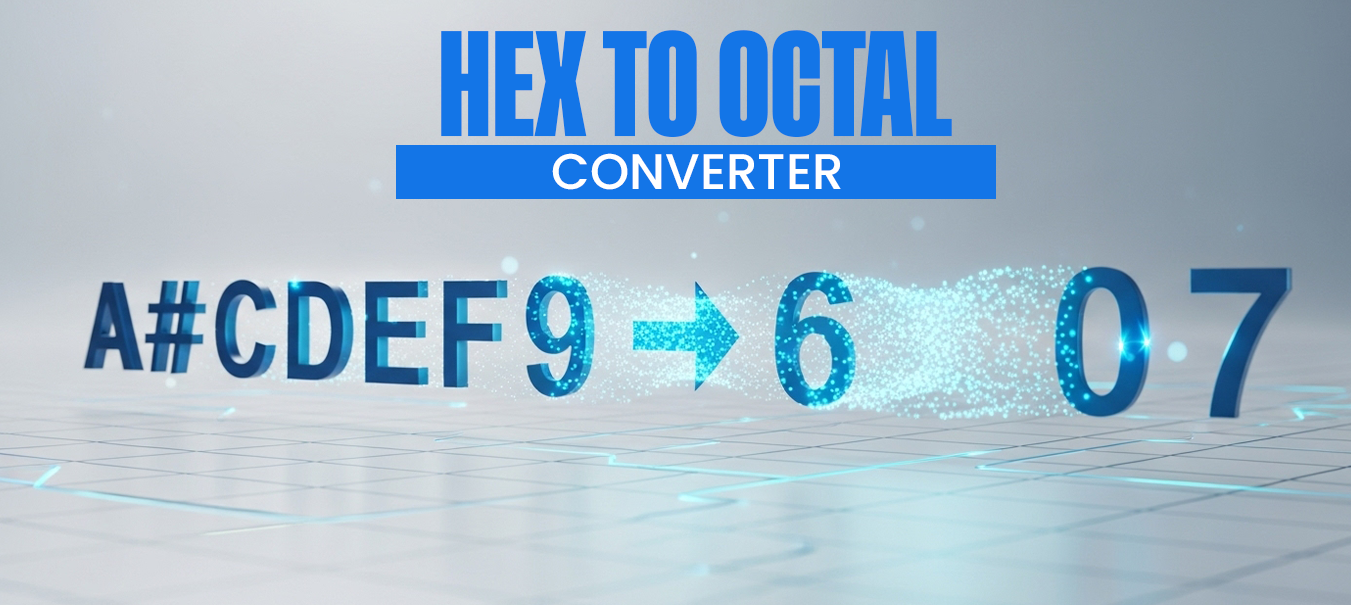HEX to Octal
Convert Hexadecimal values into Octal numbers easily and quickly

The HEX to Octal Converter is a wonderful tool that helps people change hex (base-16) numbers to octal (base-8) numbers in no time just by merely clicking one single button. One just types in the hex number, clicks on "Convert," and gets the octal output directly. The technique used by the tool is converting hex to binary first and then binary to octal.

Raheel Jakhura
CEO / Co-Founder
Our goal is to provide online free tools so you don't have to install any software for basic usages. We are trying to add more tools and make these tools free forever.
 English
English
 العربية
العربية
 Deutsch
Deutsch
 Español
Español
 Français
Français
 Italiano
Italiano
 Português
Português
 Русский
Русский
 Türkçe
Türkçe
 Tiếng Việt
Tiếng Việt
